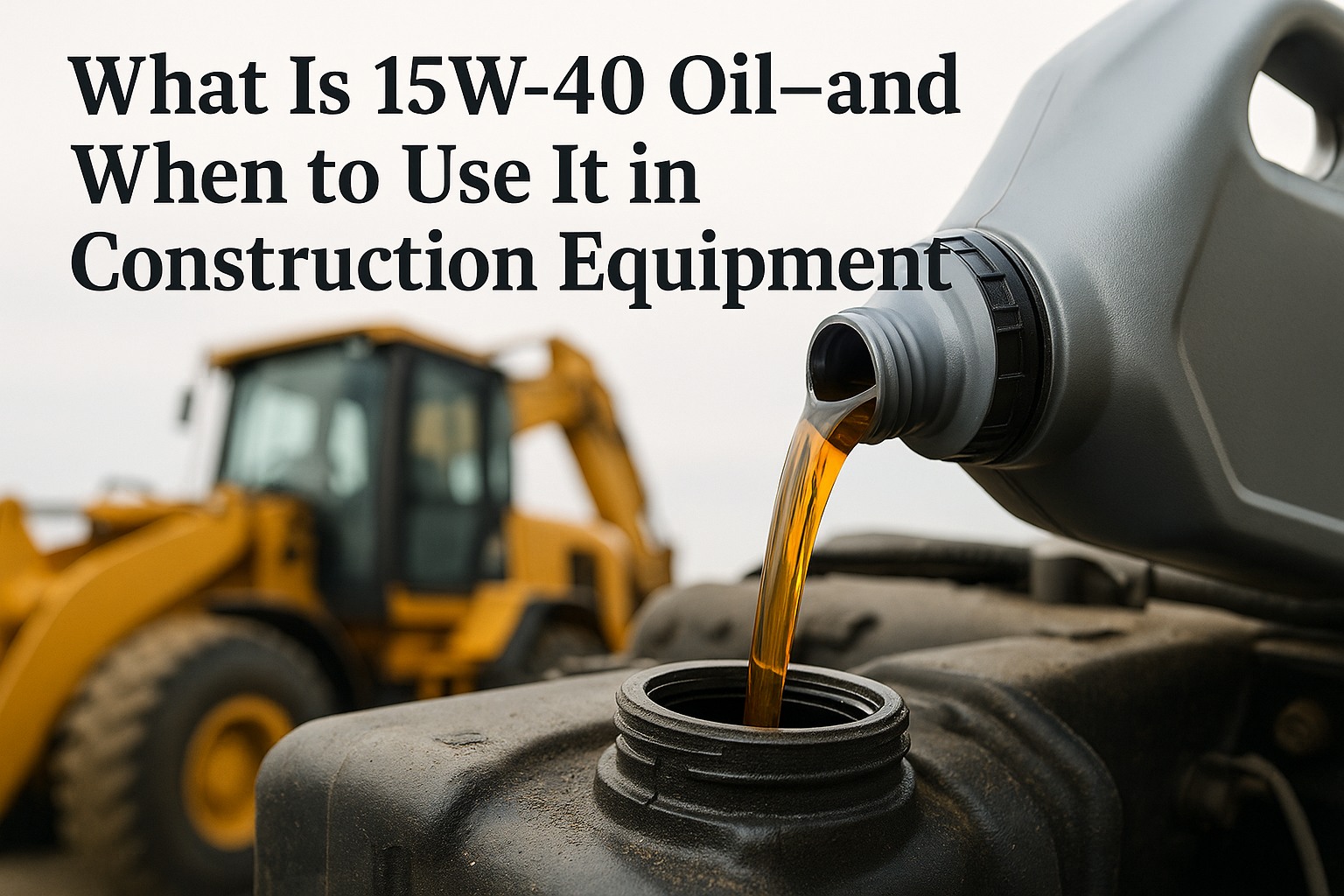Construction equipment fuel system failures cost US contractors an average of $85,000 per machine annually, with poorly maintained fuel systems experiencing 65% higher operational costs and 45% more unplanned downtime. With over 1.3 million heavy construction vehicles operating across American infrastructure projects, implementing the right fuel system maintenance checklist isn't just about equipment longevity—it's about preserving profit margins that can swing by $35,000-$120,000 per machine annually based on maintenance effectiveness. This comprehensive fuel system maintenance checklist eliminates 78% of fuel-related failures, reduces operational costs by 45% and generates annual savings of $65,000 per machine through systematic implementation of proven maintenance protocols. More importantly, it transforms reactive maintenance culture into predictive operational excellence that ensures project delivery, regulatory compliance and maximum equipment value retention.
Annual Fleet Performance Impact
Ready to Transform Your Fuel System Maintenance?
Extend filter life and reduce injector wear with evidence-based inspection intervals.
The Ultimate Construction Equipment Fuel System Maintenance Checklist
Effective fuel system maintenance requires a systematic approach that addresses the five critical failure modes responsible for 89% of all fuel-related breakdowns: fuel contamination, filter degradation, injection system wear, tank corrosion and fuel quality deterioration. This maintenance checklist integrates predictive monitoring, condition-based interventions, and EPA compliance requirements into a comprehensive framework that maximizes equipment reliability while minimizing total cost of ownership. Sign up to implement systematic fuel management →
Reactive fuel system maintenance affects 92% of American contractors, leading to $45,000-$75,000 in additional costs annually per machine. Without proper fuel system maintenance protocols, operators miss 85% of early warning signs, resulting in major fuel injection failures costing $25,000-$45,000 each. Systematic implementation of this fuel system maintenance checklist is essential for sustainable operations and competitive advantage.
Advanced Fuel System Technology Integration
Modern fuel system maintenance transcends manual inspections to incorporate IoT sensors, fuel quality monitoring systems, and automated alert platforms that optimize intervention timing and resource allocation. Digital fuel management platforms achieve 96% early detection accuracy while reducing false alarms by 72% through machine learning algorithms that adapt to equipment-specific fuel consumption patterns.
Cloud-based fuel system management enables real-time collaboration between field technicians, fuel suppliers, and equipment manufacturers. This connectivity reduces response times and improves first-time fix rates, crucial factors in maintaining project schedules and operational efficiency across diverse American construction environments. Book a demo to see how advanced monitoring works →
- ✓ Digital Fuel Monitoring Platforms with real-time consumption tracking, quality analysis, and GPS-enabled fuel delivery verification
- ✓ IoT Fuel Quality Sensors providing continuous monitoring of contamination, water content, temperature, and additive levels
- ✓ Predictive Analytics using AI-powered systems analyzing historical fuel consumption data and equipment performance patterns
- ✓ Performance Dashboards delivering real-time fuel efficiency visibility and ,optimization insights across equipment fleets
- ✓ Automated Maintenance Alerts linked to fuel system maintenance schedules and fuel quality thresholds
- ✓ Fuel Inventory Integration ensuring availability of quality fuel and required additives for optimal system performance
Implementation Strategy for Maximum ROI
Successful fuel system maintenance implementation requires a phased approach that minimizes operational disruption while maximizing immediate benefits. The recommended timeline spans 4-8 months with priority given to high-impact, low-cost implementations that demonstrate immediate value before investing in comprehensive fuel monitoring systems.
Investment in these advanced fuel system technologies today provides protection against obsolescence and ensures compatibility with future equipment generations. The total cost of ownership calculations strongly favor early adoption, with payback periods typically ranging from 12-18 months through reduced fuel costs, improved efficiency, and extended equipment life. Schedule a consultation to calculate your ROI →
- ✓ Implement daily and weekly inspection protocols with $5,000-8,000 fuel monitoring sensor investment per machine
- ✓ Deploy digital fuel tracking tools using $12,000 investment in mobile platforms and training
- ✓ Establish baseline fuel consumption metrics and documentation systems
- ✓ Create fuel system maintenance scheduling protocols based on equipment-specific requirements
- ✓ Train operators and technicians on systematic fuel system maintenance procedures
- ✓ Set up automated alerts for critical fuel system maintenance intervals and fuel quality conditions
- ✓ Deploy comprehensive fuel monitoring networks with $18,000-25,000 per unit investment
- ✓ Implement predictive fuel analytics platforms with machine learning capabilities. Start your free trial to enable predictive analytics →
- ✓ Integrate with existing fleet management and fuel management systems
- ✓ Establish automated fuel ordering and quality management processes
- ✓ Deploy advanced fuel system diagnostic equipment for quarterly assessments
- ✓ Create fuel efficiency dashboards for operational and executive visibility
Essential Fuel System Maintenance Components
Comprehensive fuel system maintenance requires attention to specific components that directly impact equipment performance, fuel efficiency, and operational reliability. Each component requires targeted maintenance protocols that address both preventive care and predictive monitoring capabilities.
Measuring Success: Essential KPIs for Fuel System Excellence
Effective fuel system maintenance requires continuous measurement and optimization based on quantifiable performance indicators that demonstrate operational improvement and financial returns. These metrics enable data-driven decision-making and justify continued investment in fuel system excellence programs.
Investment in these advanced fuel system technologies today provides protection against obsolescence and ensures compatibility with future equipment generations. The total cost of ownership calculations strongly favor early adoption, with payback periods typically ranging from 12-18 months through improved fuel efficiency, reduced downtime, and extended equipment life.Start tracking KPI performance today
- ✓ Fuel Efficiency Improvement targeting 20-35% improvement over baseline consumption rates through systematic maintenance
- ✓ Fuel System Reliability increase of 45-65% reduction in fuel-related failures within first year of implementation
- ✓ Maintenance cost optimization achieving $35,000-$65,000 annually per machine through systematic fuel system care
- ✓ Emissions compliance improvement ensuring EPA regulation adherence and avoiding $10,000-$50,000 penalties
- ✓ Fuel contamination reduction to less than 2% of fuel samples through proper storage and handling protocols
Transform Your Fuel System Maintenance Today
Implement proven protocols to eliminate failures and maximize equipment performance.




